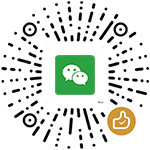The Applied Artificial Intelligence Workshop: Start working with AI today,to build games,design decision trees,and train your own machine learning models
22 July 2020
by: Anthony So ,William So ,Zsolt Nagy
Print length 页数: 420 pages
Publisher finelybook 出版社: Packt Publishing (22 July 2020)
Language 语言: English
ISBN-10: 1800205813
ISBN-13: 9781800205819
Book Description
With knowledge and information shared by: experts,take your first steps towards creating scalable AI algorithms and solutions in Python,through practical exercises and engaging activities
You already know that artificial intelligence (AI) and machine learning (ML) are present in many of the tools you use in your daily routine. But do you want to be able to create your own AI and ML models and develop your skills in these domains to kickstart your AI career?
The Applied Artificial Intelligence Workshop gets you started with applying AI with the help of practical exercises and useful examples,all put together cleverly to help you gain the skills to transform your career.
The book begins by: teaching you how to predict outcomes using regression. You’ll then learn how to classify data using techniques such as k-nearest neighbor (KNN) and support vector machine (SVM) classifiers. As you progress,you’ll explore various decision trees by: learning how to build a reliable decision tree model that can help your company find cars that clients are likely to buy. The final chapters will introduce you to deep learning and neural networks. Through various activities,such as predicting stock prices and recognizing handwritten digits,you’ll learn how to train and implement convolutional neural networks (CNNs) and recurrent neural networks (RNNs).
By the end of this applied AI book,you’ll have learned how to predict outcomes and train neural networks and be able to use various techniques to develop AI and ML models.
What you will learn
Create your first AI game in Python with the minmax algorithm
Implement regression techniques to simplify real-world data
Experiment with classification techniques to label real-world data
Perform predictive analysis in Python using decision trees and random forests
Use clustering algorithms to group data without manual support
Learn how to use neural networks to process and classify labeled images
The Applied Artificial Intelligence Workshop: A quick,interactive approach to learning AI and ML,2nd Edition
未经允许不得转载:finelybook » The Applied Artificial Intelligence Workshop: A quick,interactive approach to learning AI and ML,2nd Edition
相关推荐
- Concurrent Data Processing in Elixir: Fast,Resilient Applications with OTP,GenStage,Flow,and Broadway
- Application of FPGA to Real-Time Machine Learning Hardware Reservoir Computers and Software Image Processing
- Embedded Microprocessor System Design using FPGAs
- Statistics with Julia: Fundamentals for Data Science,Machine Learning and Artificial Intelligence
 finelybook
finelybook

